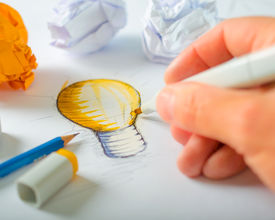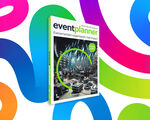Have you ever stopped to really wonder if traditional meetings or events work well? Sure, you may run a cool event, schedule an interesting agenda, and invite well-known speakers... but is that enough?
Do you feel like you are harnessing the real potential a meeting or event can generate? Or do you sense that maybe you can do more? If you aren't curious about leveling up your game or becoming a better event planner, stop here. But if you have doubts or want to question the traditional event format, this article is for you.
So what's wrong with the well-known meeting format? The quick answer is everything!
Before planning the meeting or event, there is no assessment of the expectations, no in-depth information processing, no content analysis, and no design approach. That's right - without an appropriate meeting design, your event will have less impact and may fail to meet your participants’ expectations.
"How does meeting design work?" you may be asking. As explained in the video below, "The meeting designer begins by listening carefully to the meeting owner, the person with the budget, and the expectations for the meeting. Then, the designer interviews future participants, analysis the meeting content, and assesses the organization strategy. With that input, the designer starts to cook up a better meeting, producing a design. The design takes the form of a script which explains how the meeting's content is processed, by whom, and in which formats."
On the other hand, in their book Virtuous Meetings: Technology + Design for High Engagement in Large Groups, Karl Danskin and Lenny Lind note, "The most important point is that every meeting design is a loud, clear, and unequivocal communication. There is no neutral design, no design that doesn’t communicate something."
Considering this, here's a list of steps you can apply right away if you want to learn more about meeting design and level up your guests' overall event experience:
Tip #1. Develop a participant-centered approach
You plan and run events for your attendees. All the effort you make is to thrill, amaze, and engage your guests. Thus, your purpose is to find the best ways to encourage audience participation. According to Danskin and Lind, the participant-centered approach is "a way to focus on the value of each person within a larger system" and help "the participants to contribute to the success of the whole." To do so, you must focus on designing your attendees’ experience by being aware of how they may feel, react, or behave during your event.
Tip #2. Engage small groups within large groups
Meeting design is less about planning an event and more about supplying a powerful, engaging environment. An efficient way to do this is to encourage small group interaction. To help people engage more, you can provide a round table setup to create small groups within a large group setting. Subsequently, you have to create a series of occasions (by asking questions or presenting topic discussions) for people to interact.
Tip #3. Encourage attendees to share their knowledge
Although people attend events to learn more about their areas of interest, they also hold valuable information for the rest of the audience. Thus, you should provide the context for them to share their knowledge with others. You can do so by asking your attendees different questions or by planning a teamwork session in which your guests could talk and share their thoughts about certain topics.
Tip #4. Take good care of the meeting area
Space is everything. It can shape your attendees’ mood, behavior, or reactions. Moreover, it can define the communication dynamics. As previously mentioned, a round table setup will encourage people to interact and engage more. A theater format, by contrast, will offer a less conversational and interactive vibe, this way conditioning a passive attitude during the event.
Tip #5. Assure professional facilitation
Your meeting design can be perfect, yet without a good moderator, your event might fail. You need someone to coordinate your attendees’ actions, be able to seamlessly jump from one activity to another, enable a higher level of engagement, and maintain a positive attitude. Only a professional facilitator can help you with that, so choose your facilitator carefully.
Wrap up
Meeting design is less about logistics and more about experience. As Danskin and Lind emphasize, the most important thing about designing meetings is to empower and inspire people, motivate groups to feel more like teams, and help them take risks and find resources to reach further. That’s why the human-centered approach is crucial when planning and running an event based on meeting design principles. Think about the expectations, needs, and feelings your attendees may experience, and provide an awesome event that will encourage them to cultivate the power of their shared knowledge.







